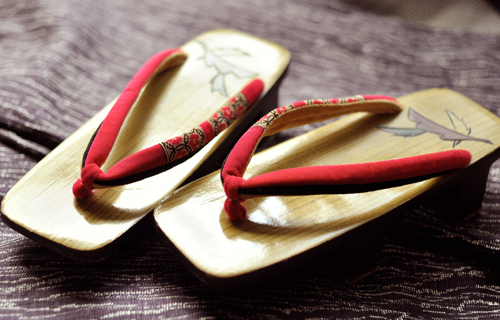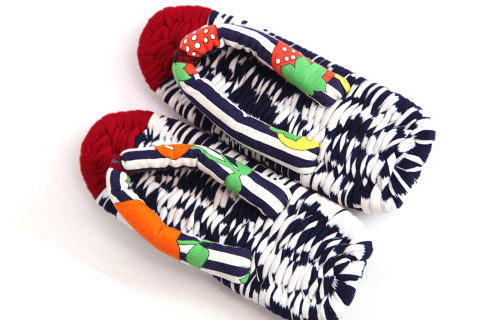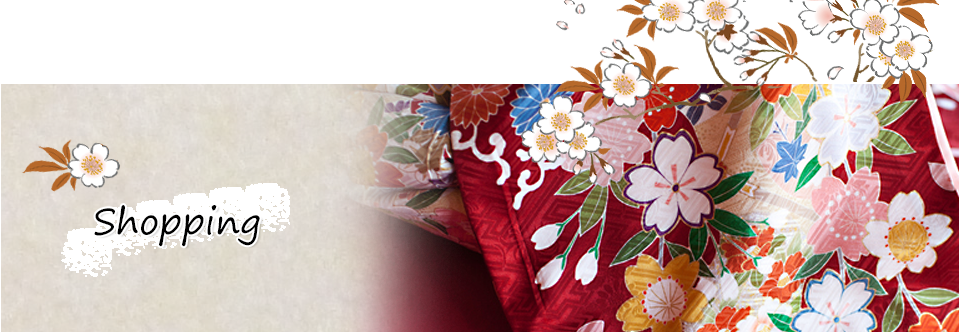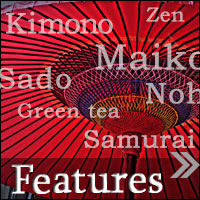Geta/Zori (Japanese Clogs/Sandals)
Geta/Zori (Japanese Clogs/Sandals)
When Japanese uses this footwear, not a sport shoes neither a high heels. Each of them uses for different occasion even it not looks like so.

Japanese Wooden clogs
The wooden clogs call “Geta”in Japan. Where to put the foot calls the “Dai”. The Dai is elevated with “Ha”which is some wooden bases.
The Geta’s Ha could be one to three but normally a Geta has two Ha. The Ha’s material uses special hard wood, so the Ha will less frictional wear that means Ha is equal the task.
The Dai has three holes; one to the front and two to the end.
These holes call “Me”, which has meaning of eye. Threads through the holes to keep fixed the foot. The thread calls “O” in Japanese.
The material of the thread are variable could be plant-based fiber, hide, etc.
The advantage of Japanese Geta is it can avoid wetting your foot even it’s a rainy day.
If it’s the sandals the foot could be sinking into dirt.
People choose Geta for everyday usage and Japanese sandals for go out to somewhere special.

Japanese Sandals
Japanese sandals call “Zori” in Japan which is a traditional foot wear.
It was common before to be popular the occidental shoes.
Today, the Zori’s main material is vinyl. Of course you can find the original one but those cost a lot. Comparing with Geta, Zori is a formal foot wear.
There are some types of the Zori and it depends on the material of the surface. Originally, the sole was made by cork but recently the major materials are taken over the place to cheaper urethane.
For men Zori changes the name to “Setta”, which has rectangular form. And the Zori made by straw or cloth which has extra thread to fix the ankle calls “Waraji” used by porter and usual working.

- Kimono
- Kimono
- Happi Coat
- Geta/Zori
- Traditional Crafts
- Kyoto Hina Doll
- Hyogu
- Kyo Yuzen-zome
- Kiyomizu Pottery
- Pottery/Lacquer
- Plaything
- Hyakunin-isshu
- Buddhist alter fittings
- Buddhist alter fittings




